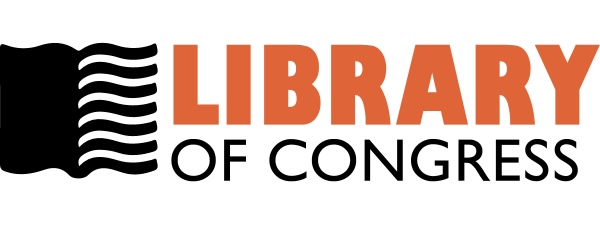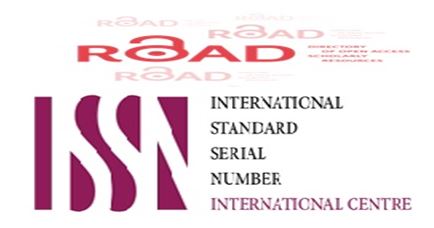Effects of liraglutide on weight control and blood pressure in type 2 diabetes mellitus Iraqi patients
DOI:
https://doi.org/10.32007/jfacmedbagdad.6441971Abstract
Background: Diabetes mellitus is the most common endocrine illness, affecting an increasing number of people all over the world. It is caused by a lack, or inadequate synthesis of insulin by the pancreas leading to an increase in blood glucose concentrations. Type 2 diabetes mellitus is the most strongly linked disease to obesity of all disorders. The number of obesity-related diabetes is predicted to reach 300 million by 2025. The term 'diabesity' was coined as a result of this strong link, therefore, weight loss is seen as a key therapeutic goal in the prevention and management of type 2 diabetes mellitus. Liraglutide is a glucagon-like peptide-1 (GLP-1) receptor agonist that stimulates insulin secretion in a glucose-dependent manner. Also, it has weight-losing benefits which is assumed to be due to appetite suppression and delayed gastric emptying.
Objectives: To evaluate the effectiveness of Liraglutide on weight management, body mass index, renal function and blood pressure in type 2 diabetic mellitus obese patients in Iraq.
Methods: An open-label therapeutic trial was conducted from November 2021 to June 2022 at Baquba Teaching Hospital/ Diyala. (23 males and 27 females) with Type 2 Diabetes mellitus for 2 - 4 years were included in the study. They were obese, hypertensive and dyslipidemic. They received metformin and liraglutide for 12 weeks as 0.6 mg/day during the first week, which was gradually increased to 1.2 mg and up to 1.8 mg/day according to patient tolerance and requirement for control at the beginning the study. The patients had their height as well as body weight measured, calculated, blood pressure measured and renal functions tested. The statistical analysis was performed using SAS (Statistical Analysis System - version 9.1). Two-way ANOVA and Least significant differences (LSD) post hoc test were performed as well as paired t-test. P< 0.05 was considered statistically significant.
Results: Treatment with liraglutide for 12 weeks has resulted in a significant decrease in body weight, BMI, and blood pressure (P<0.05). The changes in the results of renal function test of liraglutide-treated patients were not significant.
Conclusion: In obese type 2 diabetic patients, liraglutide has the potential of reducing body weight, body mass index and blood pressure. It seemed safe in terms of its systemic effects
Downloads
References
References
Deshmukh CD and Jain A. (2015) ‘Diabetes Mellitus: A Review Diabetes Mellitus: A Review’, Int. J. Pure App. Biosci., 3(3), pp. 224–230.
Saruar Alam, Md. Kamrul Hasan, Sharif Neaz, Nazmul Hussain, Md. Faruk Hossain and Tania Rahman (2021a) ‘Diabetes Mellitus: Insights from Epidemiology, Biochemistry, Risk Factors, Diagnosis, Complications and Comprehensive Management’, Diabetology 2021, Vol. 2, Pages 36-50, 2(2), pp. 36–50. doi: 10.3390/DIABETOLOGY2020004.
Mathers CD and Loncar D. (2006) ‘Projections of Global Mortality and Burden of Disease from 2002 to 2030’, PLOS Medicine, 3(11), p. e442. doi: 10.1371/JOURNAL.PMED.0030442.
Heidari M, Zolaktaf V, Zolaktaf V and Zolaktaf V. (2021) ‘Integrated Exercise and Glycemic and Peripheral Sensation Control in Diabetic Neuropathy: A Single-Blind, Randomized Controlled Trial.’, International journal of preventive medicine, 12(1), p. 169. doi: 10.4103/ijpvm.IJPVM_306_20.
Ojo O. (2016) ‘An Overview of Diabetes and its Complications’, Diabetes Research - Open Journal, 2(2), pp. e4–e6. doi: 10.17140/droj-2-e005.
Muzurović E, Kraljević I, Solak M, Dragnić S and Mikhailidis D. (2021) ‘Homocysteine and diabetes: Role in macrovascular and microvascular complications’, Journal of Diabetes and its Complications, 35(3). doi: 10.1016/j.jdiacomp.2020.107834.
Savoia C, Sada L, Zezza L, Pucci L, Lauri F, Befani A. et al. (2011) ‘Vascular Inflammation and Endothelial Dysfunction in Experimental Hypertension’, International Journal of Hypertension, 2011. doi: 10.4061/2011/281240.
Bouchonville M, Armamento-Villareal R, Shah K, Napoli N, Sinacore D, Qualls C. et al. (2014) ‘Weight loss, exercise or both and cardiometabolic risk factors in obese older adults: Results of a randomized controlled trial’, International Journal of Obesity, 38(3), pp. 423–431. doi: 10.1038/ijo.2013.122.
Inzucchi SE, Bergenstal R, Buse J, Diamant M, Ferrannini E, Nauck M. et al. (2015) ‘Management of hyperglycemia in type 2 diabetes, 2015: a patient-centered approach: update to a position statement of the American Diabetes Association and the European Association for the Study of Diabetes’, Diabetes care, 38(1), pp. 140–149. doi: 10.2337/DC14-2441.
Mukherjee N, Lin L, Contreras C and Templin A. (2021) ‘β-Cell Death in Diabetes: Past Discoveries, Present Understanding, and Potential Future Advances’, Metabolites, 11(11). doi: 10.3390/METABO11110796.
Jensen MD, Ryan D, Apovian C, Ard J, Comuzzie A, Donato K. et al. (2014) ‘2013 AHA/ACC/TOS guideline for the management of overweight and obesity in adults: A report of the American College of cardiology/American Heart Association task force on practice guidelines and the obesity society’, Circulation, 129(25 SUPPL. 1), p. S102. doi: 10.1161/01.CIR.0000437739.71477.EE/-/DC1.
Apovian CM, Aronne L, Bessesen D, McDonnell M, Murad M, Pagotto U. et al. (2015) ‘Pharmacological Management of Obesity: An Endocrine Society Clinical Practice Guideline’, the Journal of Clinical Endocrinology & Metabolism, 100(2), pp. 342–362. doi: 10.1210/JC.2014-3415.
Rigato M and Fadini GP. (2014) ‘Comparative effectiveness of liraglutide in the treatment of type 2 diabetes’, Diabetes, Metabolic Syndrome and Obesity: Targets and Therapy, 7, pp. 107–120.
Taing MW, Rose FJ. and Whitehead JP. (2014) ‘GLP-1(28-36) amide, the Glucagon-like peptide-1 metabolite: friend, foe, or pharmacological folly?’, Drug Design, Development and Therapy, 8, pp. 677–688. doi: 10.2147/DDDT.S35723.
Meek CL, Lewis H, Burling K, Reimann F and Gribble F. (2021) ‘Expected values for gastrointestinal and pancreatic hormone concentrations in healthy volunteers in the fasting and postprandial state’, Annals of Clinical Biochemistry, 58(2), pp. 108–116. doi: 10.1177/0004563220975658.
Griffioen KJ, Wan R, Okun E, Wang X, Lovett-Barr M, Li Y. et al. (2011) ‘GLP-1 receptor stimulation depresses heart rate variability and inhibits neurotransmission to cardiac vagal neurons’, Cardiovascular research, 89(1), pp. 72–78. doi: 10.1093/CVR/CVQ271.
Inoue K, Maeda N, Fujishima Y, Fukuda S, Nagao H, Yamaoka M. et al. (2014a) ‘Long-term impact of liraglutide, a glucagon-like peptide-1 (GLP-1) analogue, on body weight and glycemic control in Japanese type 2 diabetes: An observational study’, Diabetology and Metabolic Syndrome, 6(1), pp. 1–9. doi: 10.1186/1758-5996-6-95. Mehta A, Marso SP and Neeland IJ. (2017) ‘Liraglutide for weight management: a critical review of the evidence’, Obesity Science and Practice, 3(1), pp. 3–14. doi: 10.1002/osp4.84.
Alonso-Troncoso I, Carollo-Limeres C, Rios-Prego M, Guler I, Cadarso-Suárez C and F-Mariño A. (2019) ‘Liraglutide in a real-world setting: Joint modeling of metabolic response, prediction of efficacy, and cardiovascular risk’, Endocrinologia, Diabetes y Nutricion, 66(6), pp. 376–384. doi: 10.1016/j.endinu.2018.09.005.
Carrascosa A, Yeste D, Moreno-Galdó A, Gussinyé M, Ferrández Á, Clemente M. et al. (2018) ‘Body mass index and tri-ponderal mass index of 1,453 healthy non-obese, non-undernourished millennial children. The Barcelona longitudinal growth study’, Anales de Pediatria, 89(3), pp. 137–143. doi: 10.1016/j.anpedi.2017.12.016.
Mosikian AA, Golikova T, Martjanova M and Babenko A. (2022) ‘Prediction scale of response to liraglutide therapy as the method for increase of treatment efficacy in type 2 diabetes’, Future Science OA, 8(3). doi: 10.2144/fsoa-2021-0070.
Mezquita-Raya P, Reyes-Garcia R, Moreno-Perez O, Escalada-San Martin J, Ángel Rubio Herrera Miquel and Lopez de la Torre Casares M. (2015) ‘Clinical Effects of Liraglutide in a Real-World Setting in Spain: eDiabetes-Monitor SEEN Diabetes Mellitus Working Group Study Introduction: A limitation with randomized’, Diabetes Therapy, 6. doi: 10.1007/s13300-015-0112-4.
Vilsbøll T, Christensen M, Junker A, Knop F and Gluud L. (2012) ‘Effects of glucagon-like peptide-1 receptor agonists on weight loss: Systematic review and meta-analyses of randomised controlled trials’, BMJ (Online), 344(7841), pp. 1–11. doi: 10.1136/bmj.d7771.
Kim M, Platt M, Shibasaki T, Quaggin S, Backx P, Seino S. et al. (2013) ‘GLP-1 receptor activation and Epac2 link atrial natriuretic peptide secretion to control of blood pressure’, Nature Medicine 2013 19:5, 19(5), pp. 567–575. doi: 10.1038/nm.3128.
Gaspari T, Liu H, Welungoda I, Hu Y, Widdop R, Knudsen L. et al. (2011) ‘A GLP-1 receptor agonist liraglutide inhibits endothelial cell dysfunction and vascular adhesion molecule expression in an ApoE-/- mouse model’, Diabetes and Vascular Disease Research, 8(2), pp. 117–124. doi: 10.1177/1479164111404257.
Ghuman NK, Saadah L, Al Najjar M, Shaheen D, Am S and Am S. (2015) ‘Effectiveness of Liraglutide in Type II Diabetes Mellitus Management: Experience in Emirati Patients’, Clinical Medicine insights: endocrinology and diabetes, 2015(8). doi: 10.4137/CMed.s3175
Downloads
Published
Issue
Section
License
Copyright (c) 2022 Mohammed Abdul- Hassan Jabarah

This work is licensed under a Creative Commons Attribution-NonCommercial 4.0 International License.
For all articles published in Journal of the Faculty of Medicine Baghdad, copyright is retained by the authors. Articles are licensed under an open access Creative Commons CC BY NC 4.0 license, meaning that anyone may download and read the paper for free. In addition, the article may be reused and quoted provided that the original published version is cited. These conditions allow for maximum use and exposure of the work, while ensuring that the authors receive proper rights.




















 Creative Commons Attribution 4.0 International license..
Creative Commons Attribution 4.0 International license..


